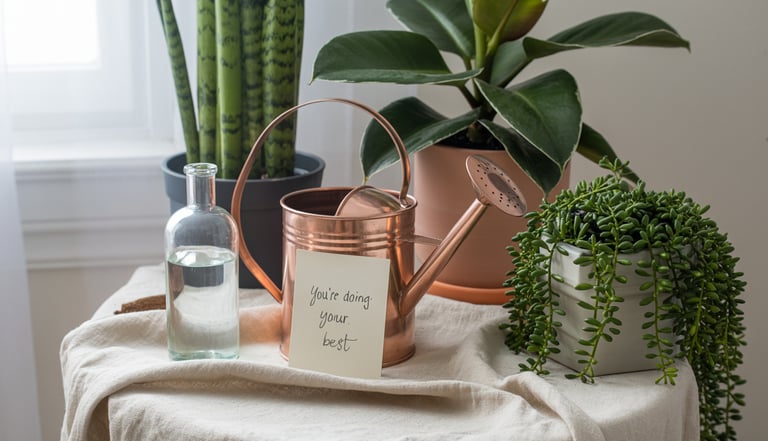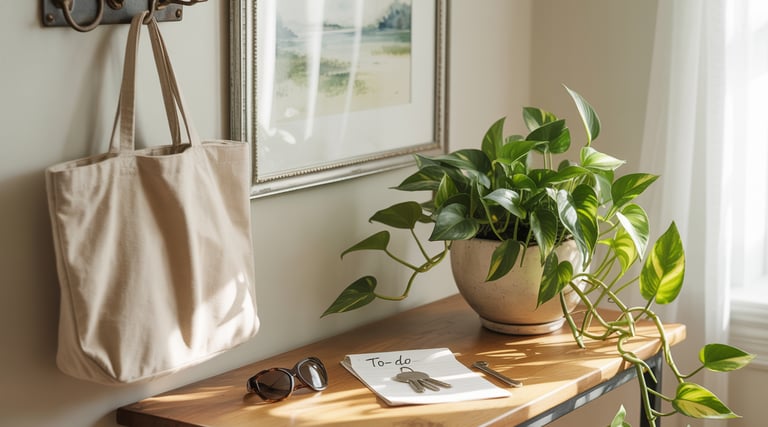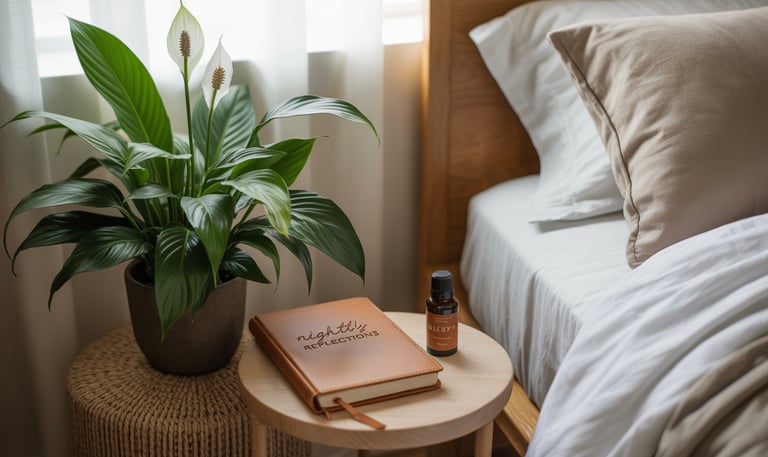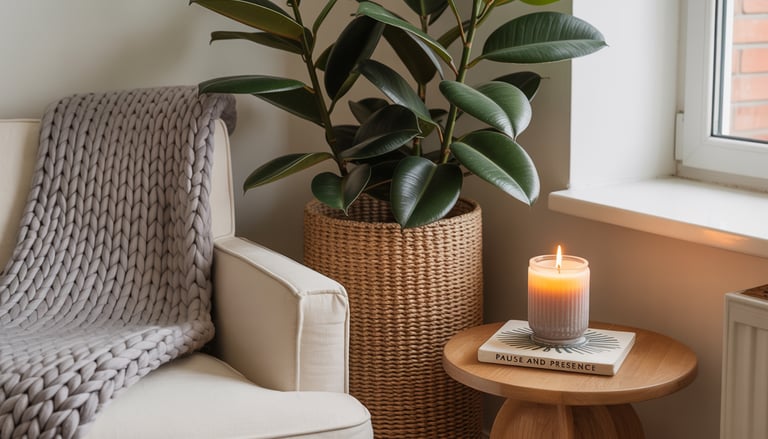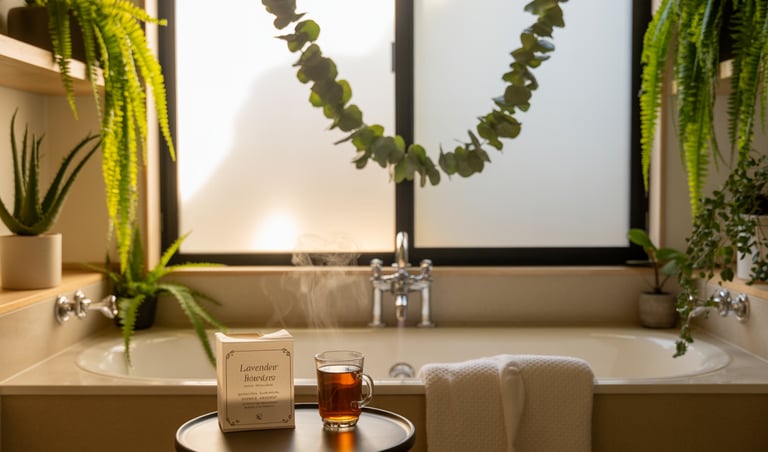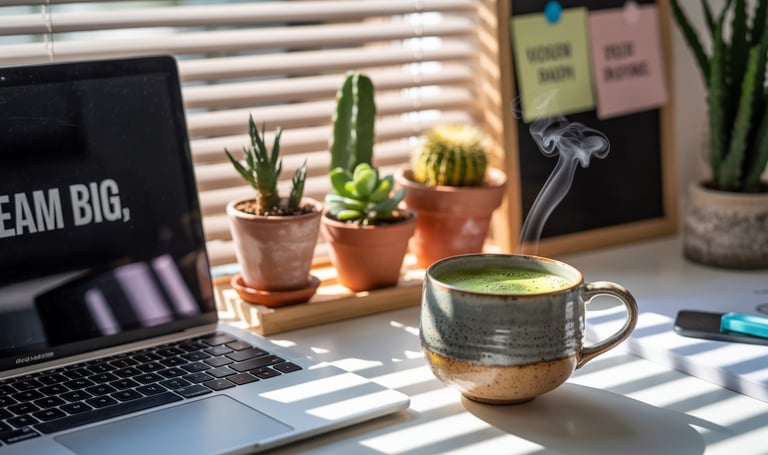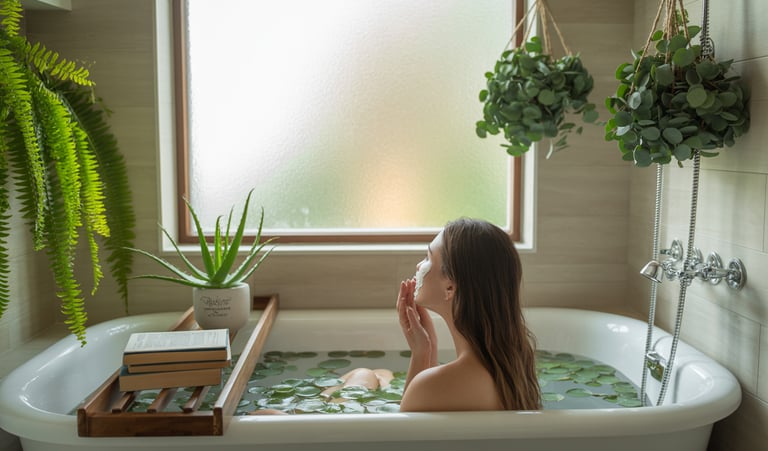Bring Nature Home: Low-Maintenance Plants for Busy, Soft Life Living
These low-maintenance houseplants are perfect for anyone craving a slower, softer lifestyle filled with peace—not plant drama.
HOME DECORSPIRITUALITY AND CHAKRASSELF-CARE AND WELLNESS
FONNI
5/9/202510 min read
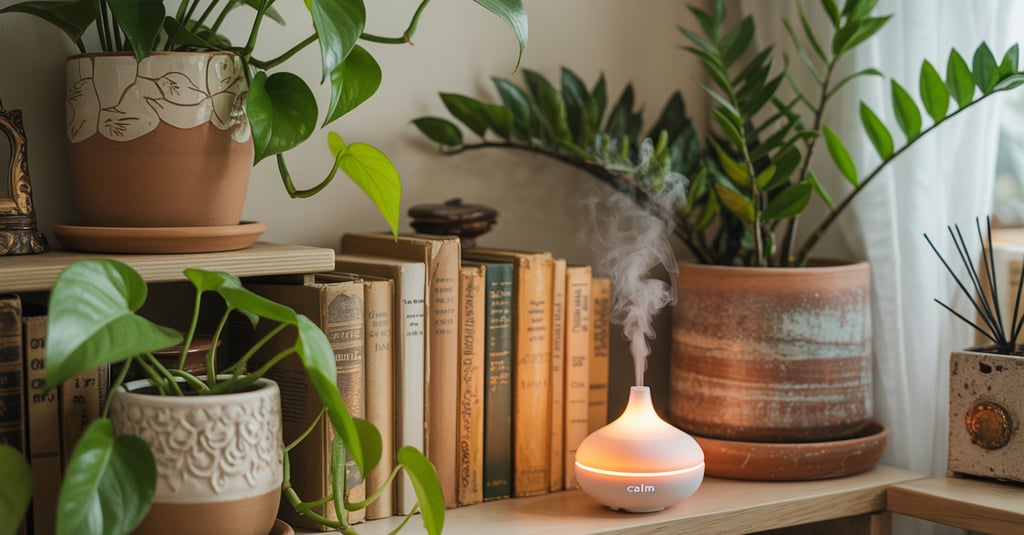

The content on this website was created with the help of AI. LOVEOWE LLC is a participant in the Amazon Services LLC Associates Program, an affiliate advertising program designed to provide a means for sites to earn fees by linking to Amazon.com and affiliated sites. This site utilizes affiliate links, meaning if you purchase a product via a link on this site, I may earn a small commission at no cost to you. All opinions remain my own. I get commissions for purchases made through links in this post. For more info, click here. Thank you for your support!
I once believed that indoor plants required a rigid watering schedule and a natural green thumb. Yet, my longing for a calming, earthy ambiance remained strong.
Then, I found low-maintenance plants, which revolutionized my approach. They allowed me to enjoy nature's tranquility indoors, stress-free.
For those who cherish nature's calming influence, I'm eager to share how to effortlessly bring it indoors. This article will dive into indoor plant tips and reveal how embracing soft life living can be as straightforward as selecting the right plants.
Whether you're an experienced plant lover or a beginner, you'll gain valuable insights. These will help you cultivate your green thumb and boost your well-being.
The Gentle Art of Plant Parenthood
For those who live the soft life, caring for plants is a form of self-love and compassion. It's about embracing a lifestyle that values mindfulness and ease. This includes how we care for our plants.
What Does "Soft Life Living" Mean for Plant Care?
Soft life living is about adopting a compassionate and gentle approach to life. In plant care, it means choosing low-maintenance greenery that thrives with minimal effort. This way, we can enjoy the benefits of plant parenthood without stress, ideal for busy individuals.
Why Low-Maintenance Plants Are Essential for Busy Lifestyles
Low-maintenance plants are ideal for those embracing the soft life living philosophy. They need less attention, forgiving occasional neglect. They also purify the air and beautify our spaces. By choosing easy care plants, we can cultivate calm and connection to nature, even on the busiest days.
Plants That Love You Back: Low-Maintenance Greenery for Busy, Soft Life Living
Living a busy life doesn't mean we can't have plants that thrive with minimal care. These plants offer us many benefits, from improving our mood to purifying the air. The idea of "plants that love you back" is more than just a saying; it's supported by science.
The Reciprocal Relationship Between Plants and People
Plant care is a two-way street. We give them what they need, and they make our spaces better and healthier. This relationship is key for those who value a peaceful, nurturing environment.
For instance, Pothos and Philodendron are great examples. They need little care but offer a lot, like clean air and beauty. They're perfect for those with little time to spare.
How Plants Support Your Wellbeing with Minimal Demands
Plants can greatly support our wellbeing without taking up too much of our time. They can lower stress, uplift our mood, and even clean the air we breathe. Adding low-maintenance plants to our lives can be a simple way to boost our wellbeing.
By picking the right plants and knowing their simple needs, we can enjoy the perks of plant care without the hassle. This way, we can fully embrace the idea of "stress-free gardening."
Top 10 Virtually Indestructible Houseplants
Busy lives require plants that are not just beautiful but also incredibly resilient. For those eager to add greenery without the hassle, we've selected the top 10 houseplants. They're ideal for both busy individuals and beginners.
Snake Plants: The Ultimate Survivor
Snake Plants excel in low-light environments and survive with minimal watering. They're perfect for those with hectic schedules.
ZZ Plants: Glossy and Drought-Tolerant
ZZ Plants are low-maintenance and can withstand neglect, making them ideal for beginners. Their glossy leaves add elegance to any space.
Pothos: The Trailing Beauty
Pothos is versatile and easy to care for, thriving in various lighting conditions. It's great for hanging baskets or trailing down shelves.
Spider Plants: Air-Purifying Champions
Spider Plants are not only easy to care for but also purify the air. They're a healthy addition to any home.
Succulents: Desert Dwellers for Indoor Spaces
Succulents store water, making them drought-tolerant and perfect for those who forget to water. They come in a wide range of shapes and sizes.
Aloe Vera: Healing and Hardy
Aloe Vera is low-maintenance and has healing properties. It's a great addition to any home.
Rubber Plants: Bold and Forgiving
Rubber Plants have large, statement leaves and thrive in various lighting conditions. They're a great choice for busy people.
Philodendron: Adaptable Classics
Philodendron is versatile, growing in different lighting conditions. It can be trained to climb or trail, fitting various spaces.
Jade Plants: Symbols of Prosperity
Jade Plants require minimal care and are seen as symbols of good luck and prosperity.
Air Plants: No Soil Required
Air Plants are epiphytes that don't need soil and thrive with minimal watering. They're a unique, low-maintenance addition to any home.
These plants are not only stunning but also offer numerous benefits. They purify the air and reduce stress. By adding them to your home, you can enjoy the benefits of plant parenthood without the hassle.
Low-Light Heroes: Plants for Dim Corners
Dimly lit spaces don't have to be devoid of life. There are plants that thrive in such conditions. If finding the right plants for low-light areas is a challenge, you're not alone. Many face the hurdle of limited natural light, yet we can bring greenery into our homes.
Cast Iron Plants: Living Up to Their Name
Cast Iron Plants are renowned for their resilience and ability to flourish in low light. They need minimal care and can survive with infrequent watering. This makes them perfect for those with busy schedules.
Peace Lilies: Elegant Shade-Lovers
Peace Lilies are not just beautiful; they also purify the air. They thrive in well-draining soil and tolerate low light. Their elegant white blooms bring serenity to any room.
Chinese Evergreens: Colorful Low-Light Options
Chinese Evergreens are versatile plants with a variety of colors and patterns. They excel in low-light conditions and require minimal upkeep. This makes them ideal for indoor spaces with limited sunlight.
Pothos: The Versatile Vine for Dark Spaces
Pothos is a low-maintenance plant that thrives in various light conditions, including low light. It's perfect for hanging baskets or trailing down shelves, adding greenery to any room.
Some benefits of these low-light heroes include:
Purifying the air and improving indoor air quality
Adding a touch of nature and beauty to your space
Being relatively low maintenance and easy to care for
Moisture-Loving Plants That Forgive Overwatering
For those prone to overwatering or seeking a more humid space, there are plants that not only endure but flourish in moist conditions. These are ideal for those with busy schedules or new to caring for plants. They embody a forgiving nature, aligning with the ethos of a soft life.
Boston Ferns: Humidity Lovers with Staying Power
Boston ferns are perfect for those who prefer a humid atmosphere. They thrive on consistent moisture and can handle occasional overwatering. This makes them ideal for bathrooms or kitchens, where humidity levels are naturally higher.
Lucky Bamboo: Water-Based Wonders
Lucky bamboo excels in water-based settings, making it a top pick for those who often overwater. It thrives in bright, indirect light and requires steady moisture levels.
Maranta (Prayer Plants): Forgiving Tropical Beauties
Maranta, or prayer plants, are tropical gems that adore moist soil and high humidity. They are quite forgiving if you sometimes overwater. Yet, they do benefit from a potting mix that drains well.
Calathea: Stunning Patterns with Moisture Tolerance
Calathea plants boast stunning, patterned leaves and can thrive in moist environments. They prefer bright, indirect light and consistent watering. They can also handle some overwatering.
By selecting these moisture-loving plants, you can create a lush, green indoor space effortlessly. This fits perfectly into a soft life living and plant care guide, eliminating the need for constant upkeep.
Essential Care Routines for the Busy Plant Parent
Enjoying the benefits of plants doesn't have to be overwhelming. With a few simple care routines, you can keep your plants thriving. These easy tips fit seamlessly into a busy lifestyle, reducing stress and ensuring your plants' health.
Watering Schedules That Work with Your Lifestyle
Creating a watering schedule that fits your lifestyle is key for busy plant parents. Start by checking each plant's specific watering needs. Then, plan your watering days to fit your schedule. Use a planner, app, or sticky note to remember when to water.
For example, water your plants every Sunday morning. Or, set a reminder on your phone for every 7-10 days, based on the plant's needs.
Simple Feeding Solutions for Thriving Plants
Feeding your plants doesn't have to be complicated. Use a balanced, water-soluble fertilizer during the growing season (spring and summer) to boost your plants. Consider using a fertilizer stick or slow-release fertilizer for easy feeding.
Always follow the product label instructions to avoid over-fertilizing. Over-fertilizing can harm your plants.
Low-Effort Cleaning and Maintenance Tips
Keeping your plants clean and well-maintained is easier than you think. Regular dusting and occasional pruning can greatly improve their health and appearance. Here are some tips to get you started:
Dust Removal Techniques: Use a soft-bristled brush or a damp cloth to gently remove dust from leaves. For delicate plants, a can of compressed air can also be used to blow away dust.
Pruning Basics for Beginners: Prune your plants to maintain their shape, encourage new growth, and remove dead or dying leaves. Use clean, sharp scissors or pruning shears to prevent disease spread.
Smart Tools and Systems for Effortless Plant Care
As a plant enthusiast, I've found that smart tools significantly enhance indoor garden care. Our busy lives often lead to neglecting our plants. Thankfully, technology offers innovative solutions to streamline plant care.
These smart tools simplify plant care, ensuring they receive the right water, nutrients, and attention. They do this even when we're not around, making plant care effortless.
Self-Watering Containers and How They Work
Self-watering containers are a revolution for busy plant owners. These pots feature built-in water reservoirs that supply soil as needed, reducing watering frequency. This allows you to travel without worrying about your plants' hydration.
They function through a wicking system or moisture-sensing mechanism. This draws water from the reservoir into the soil, ensuring roots stay moist and plants grow healthily.
Plant Apps and Reminders for the Forgetful
For those prone to forgetting plant care, numerous plant care apps offer reminders and tips. These apps are invaluable for keeping your plants healthy.
Many apps allow you to input your plant types. They then provide tailored care schedules, including watering reminders, fertilization advice, and pruning tips.
Automated Care Systems for Extended Absences
Automated care systems are essential for extended absences. These systems water your plants at set intervals, ensuring they're cared for while you're away.
Some systems also offer remote monitoring. This lets you check on your plants from your phone or computer, providing peace of mind during travel or business trips.
Seasonal Care: Minimal Adjustments for Maximum Results
To keep your plants thriving all year, understanding seasonal changes is key. Each season brings different temperatures, humidity, and light. These factors greatly affect your plants' health and growth.
With a few simple care adjustments, your plants can thrive through seasonal changes. Let's dive into strategies for winter, summer, and vacation preparation.
Winter Care: Surviving Low Humidity and Less Light
Winter poses challenges for indoor plants, with low humidity and less light. Move plants to brighter spots or use grow lights. Also, water less as plants grow slower in cold. A humidifier can help keep humidity levels right.
Summer Adaptations: Managing Heat and Growth Spurts
Summer brings high temperatures and rapid growth. Water plants well but avoid overwatering. Most plants need more light, but some need shade to prevent damage. Fertilizing during growth supports healthy development.
Vacation Preparation: Set-It-and-Forget-It Strategies
Before you leave, water plants well and place them in bright, indirect light. Use self-watering planters or ask a friend to water. For longer trips, automated watering systems can keep plants hydrated.
Troubleshooting Common Issues with Minimal Effort
Dealing with common plant care issues doesn't have to overwhelm you. A few simple strategies can keep your plants thriving. Even low-maintenance plants face problems, but quick identification and solution can make a huge difference.
Identifying Problems Before They Become Critical
Regularly checking your plants is essential for early issue detection. Look for signs like yellowing leaves, droopy stems, or unusual growth. Being proactive can often stop minor issues from escalating.
Check for pests and diseases
Monitor watering and humidity levels
Adjust lighting as needed
Quick Fixes for Yellowing Leaves and Drooping Plants
Yellowing leaves and drooping plants often have simple solutions. For yellowing leaves, ensure your plant isn't getting too much or too little water. Adjust your watering schedule as needed. For drooping plants, examine lighting and humidity levels and make necessary adjustments.
Natural Pest Management for Busy People
Managing pests can be challenging, but natural solutions exist. Neem oil and insecticidal soap are effective against pests like spider mites and mealybugs. Regular cleaning and inspecting new plants can also prevent pest problems.
Use neem oil or insecticidal soap
Isolate new plants before introducing them to your main collection
Regularly wipe down leaves with a damp cloth
Conclusion: Embracing the Gentle Joy of Plant Companionship
Our journey through low-maintenance plants reveals the transformative power of plant companionship. These gentle friends not only beautify our spaces but also uplift our wellbeing. The act of nurturing plants deepens our connection with nature, bringing calm and joy.
For beginners, starting with hardy houseplants is a wise choice. It builds confidence as you learn about the diverse benefits of plants. From air purification to healing properties, each plant offers unique advantages.
Integrating plants into our daily lives fosters a more balanced environment. Whether you aim to purify the air, enhance your mood, or simply add greenery, there's a plant for every need. Remember, the joy of plant companionship is always available, ready to nurture your wellbeing and enhance your life.
